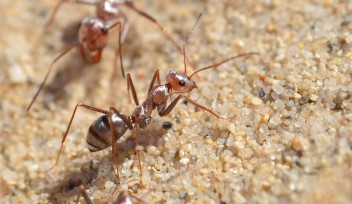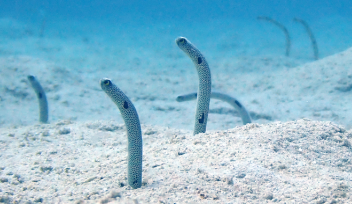Global study reveals effectiveness of protected areas

Highlights
- Researchers have conducted a global study on the effectiveness of recently established protected areas in preventing forest loss
- The study explores protected area performance by countries, with South Africa, Cambodia, Latvia, Guatemala, Uruguay, Brazil and New Zealand leading the way in the effectiveness of their protected areas
- The research team estimated that overall, protected areas established between 2000-2012 prevented 86,062 square kilometers of forest loss
- If all countries had protected areas that were as effective as their top-performing neighbor, then an additional 33,020 square kilometers of forests would have been saved
- Machine learning found that agricultural activity, economic growth and governance were associated with effectiveness
Press release
Scientists have published a global study on the effectiveness of protected areas in preventing deforestation.
The study, published recently in Environmental Research Letters, explored the success of country-level protected areas at reducing forest loss, and used machine learning to uncover some of the factors that contribute to differences in effectiveness.
“Protected areas are a key conservation tool that are essential for stemming the tide of biodiversity and habitat loss across the Earth,” said first author, Dr. Payal Shah, a research scientist at the Okinawa Institute of Science and Technology (OIST), who specializes in applying economic theory to conservation.
She added: “Scientists are calling for 30% of land and ocean to be protected by 2030. But as more and more land is placed under protection, it’s increasingly important to measure how well each protected area is working, so policy makers can make more informed decisions about future conservation efforts.”

For the study, the research team used satellite data of forest cover between the years 2000-2012, focusing on protected areas that had been established during this timeframe. Countries that had not placed a large enough area of land into protection were removed from the analysis.
For the 81 countries that remained in the analysis, 3.2 million square kilometers of land had been placed into protection. The research team then estimated how effective these protected areas were by comparing changes in forest cover between protected and statistically matched unprotected areas. The areas of land were matched using a wide range of factors that are important predictors of deforestation, including their distance to cities, their elevation from sea level and the slope of the land.
“The aim was to try and understand how much deforestation would have occurred in an alternative scenario – if an area had not been placed under protection,” explained Dr. Shah.
The researchers found that overall, around 34,000 square kilometers of forest was lost within newly established protected areas between 2000 and 2012 – an area larger than the size of Belgium. However, they estimated that if these protected areas had not been put into place, an additional 86,062 square kilometers of forest would have also been lost. This would have meant that an area of land totaling around 120,000 square kilometers – the size of North Korea – would have been deforested.
“This means that protected areas on the whole reduced deforestation by 72%, which is great news,” said Dr. Shah. “But when you start breaking down the data by country, the results are more mixed.”
The scientists saw that protected areas in some countries performed significantly better than other countries within their region. Leading the way were South Africa, Cambodia, Latvia, Guatemala, Uruguay, Brazil and New Zealand, for the regions of Africa, Asia, Europe, North America, South American and Oceania, respectively.

The research team estimated that if all the other countries’ protected areas had been as successful as the best performing country in their region, then an additional 33,020 square kilometers of forests would have been saved, which would have reduced deforestation within the newly established protected areas to roughly 1000 square kilometers only.
“The countries in each region are battling against similar key drivers of deforestation, such as timber logging or wildfires, so theoretically, every country has the potential to do equally well,” said Dr. Shah. “But we are seeing these huge disparities in the effectiveness of their protected areas. So of course, we then want to understand the underlying factors.”
One main factor found was based on the strictness of the protected areas. Strictness categories are based on the degree of human activity or use of natural resources allowed on the land. In most countries, more strictly protected areas were more effective than less strictly protected areas.
Next, the researchers fed data on the demographics, agriculture, economy and politics of each country into a machine learning algorithm, which then identified which factors were most strongly linked to the effectiveness of the country’s protected area network.
Countries with high levels of economic growth were associated with higher levels of effectiveness for protected areas.
Meanwhile, countries with higher levels of agricultural activity tended to have less effective protected areas, particularly in countries that had a lower quality of governance and growing rural populations.
“This was expected as agriculture and deforestation often go hand in hand,” explained Dr. Shah. “Land is a limited resource so in countries with high agricultural activity, there may be a large deforestation pressures within protected areas in countries that lack proper governance.”
However, the researchers emphasized that more in-depth research needs to be done on a country-by-country basis to confirm the reasons underlying these associations.
“As a global analysis, this study allows us to pinpoint which countries are doing well, and which are doing less well,” said Dr. Shah. “We can then carry out more targeted research in these countries to help support more effective conservation strategies.”
Article Information
Title: What determines the effectiveness of national protected area networks?
Journal: Environmental Research Letters
Authors: Payal Shah, Kathy Baylis, Jonah Busch and Jens Engelmann
Date: 29 June 2021
DOI: https://doi.org/10.1088/1748-9326/ac05ed
The header image shows a satellite photo of deforestation within the Amazon rainforest. Credit: ESA/A.Gerst, CC BY-SA 3.0 IGO
Specialties
For press enquiries:
Press Inquiry Form

















